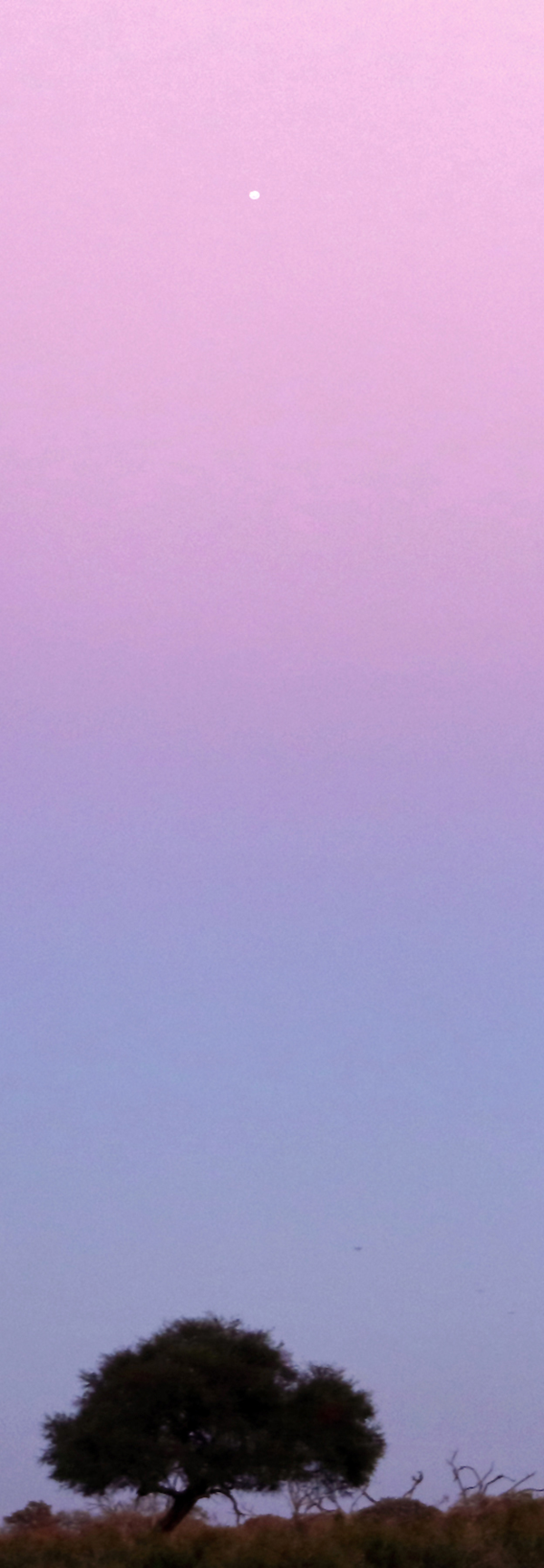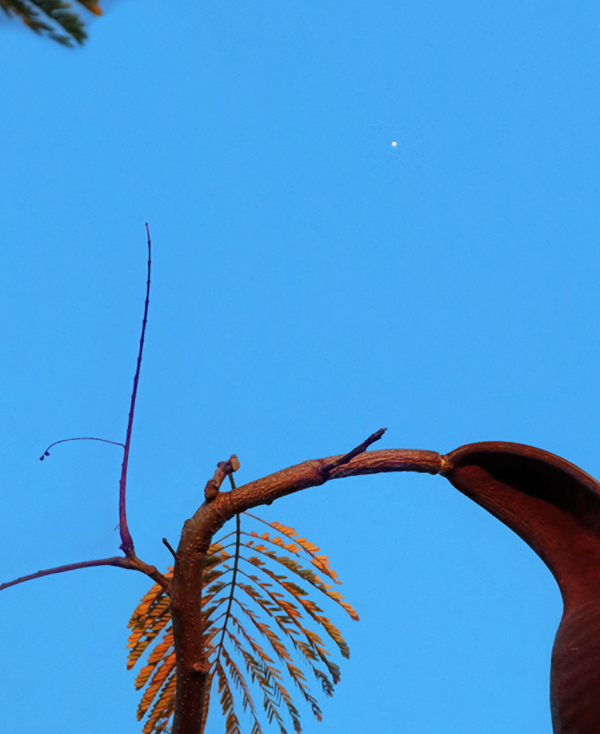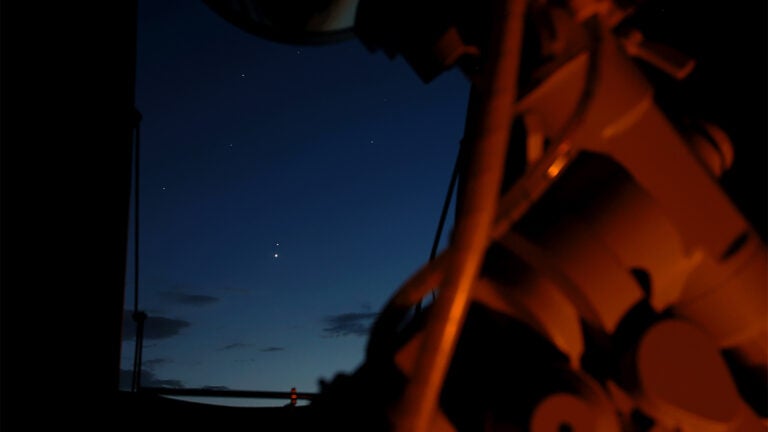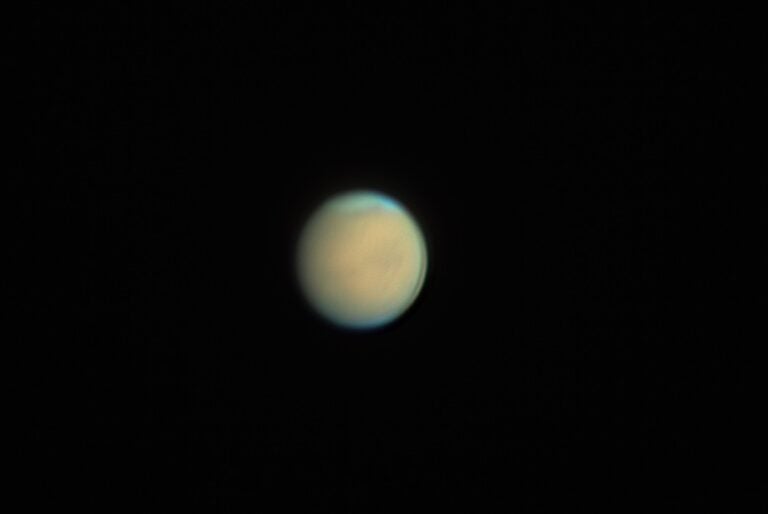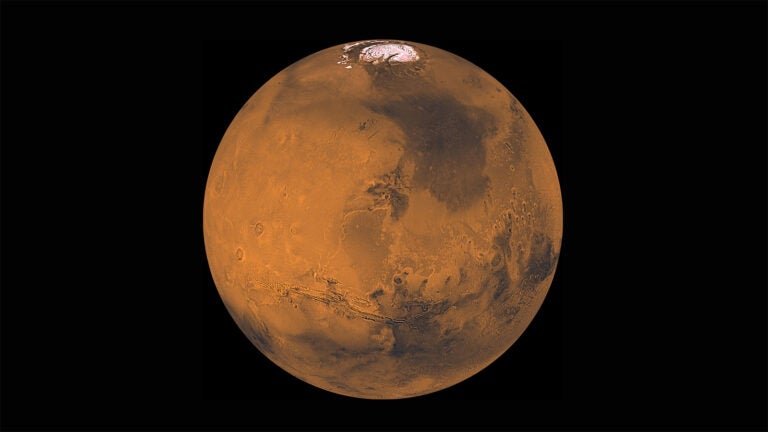Then I read the Editors’ comment below: “We regret that we are unable to reproduce Mr. Knobel’s sketches of Mars . . . which show prominent surface details quite plainly.”
OK, I have to admit that seeing Mars with the unaided eye in daylight is not exceptionally “remarkable,” especially during a perihelic opposition, like the one we just had last July. But it is fun to try and exciting if you succeed. On the other hand, it is in no way as easy as Knobel makes it out to be. Nor would the planet, by any stretch of the imagination, be visible to a casual gaze — especially a half-hour prior to sunset.
My first attempts at seeing Mars in daylight were somewhat casual. On the morning of July 22, just five days from opposition, I saw Mars mingling with the Belt of Venus in the west, about 10 minutes before sunrise. At the time, Mars was nearly superlative: 100 percent illuminated, at 171° elongation from the Sun, 24″ in diameter, 0.39 astronomical unit (AU) from Earth, and shining at magnitude –2.7. Easy, right? Actually, no.
While Mars was apparent five minutes from sunrise (easy enough for me to take photos of it), I lost sight of it as sunrise approached simply because I looked away from it for about 30 seconds! Try as I might, I just couldn’t pull it out of the sky background after that.
But there is good news. On the same day, Scott Harrington of Evening Shade, Arkansas, was able to follow Mars for 1 minute 30 seconds after sunrise. For him, Mars was only 3.2° high and also in the dark purple-blue part of the Belt of Venus.
My first success came September 11 when Mars was 48° above the horizon, 92 percent illuminated, at 131° elongation from the Sun, 19″ in diameter, 0.49 AU from Earth, and shining at magnitude –1.8. What’s more, the skies were not as transparent as they were in July. Clearly, the greater altitude was a major factor.
After spying Mars, I lined up the planet with some branches, then moved a chair to that prime viewing spot. The next afternoon, I sat in the chair and found Mars 30 minutes before sunset through binoculars, and 16 minutes before sunset with my unaided eyes.
Persisting, Lauren suddenly got the idea to move her head back and forth and see if motion would pull it out, “like tapping a scope,” she said. She was successful, as “little Mars became immediately apparent! It wasn’t quite the same as how motion helps in the eyepiece, but it made Mars move differently than the blue field phenomenon and stick out like a sore thumb among the many other tiny points of light in my vision. It was 7:03 p.m., and though it was faint, I bet I could see it earlier if I keep trying, now that I know about the trick of swaying back and forth.”
Harrington had a string of success in sighting Mars (magnitude –1.6) with his naked eyes, also beginning September 18, when he saw it exactly seven minutes before sunset. As with me and Lauren, Harrington used the first night to line Mars up with a tree after sunset, then marked his location and returned to it the next night. His record naked-eye sighting of the Red Planet was 17 minutes before sunset September 19.
If you’ve had similar success, share your views with me at sjomeara31@gmail.com.


